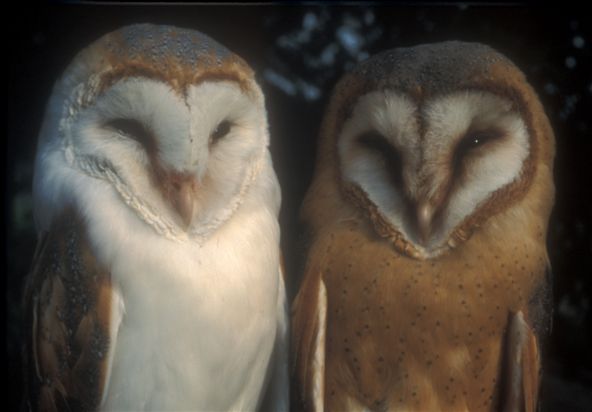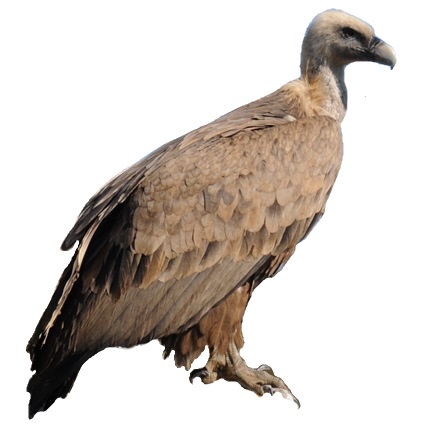|
Sophiornithidae
The Sophiornithidae (literally "wisdom birds") are an extinct family (biology), family of chicken-sized predatory birds that lived from the Paleocene to the Eocene periods of the Cenozoic, and were found primarily in Europe, and are thought to be primitive owls (hence, the name wisdom bird). They were also possibly related to Strigiformes. The French genera ''Berruornis'' (Late Paleocene to Late Eocene/Early Oligocene), as well as ''Palaeotyto'' and ''Palaeobyas'' from Quercy, are sometimes placed in this family. The latter might instead be Tytonidae, barn owls, while the first might be a very basal owl but not an actual sophiornithid. ''Strigogyps'' was placed here for a time, but it has been revised several times since thenPeters, Dieter Stefan (2007): The fossil family Ameghinornithidae (Mourer-Chauviré 1981): a short synopsis. ''Journal of Ornithology'' 148(1): 25-28. and appears to be an Ameghinornithidae, ameghinornitid; these were distant relatives of the seriemas. Refe ... [...More Info...] [...Related Items...] OR: [Wikipedia] [Google] [Baidu] |
Owls
Owls are birds from the Order (biology), order Strigiformes (), which includes over 200 species of mostly Solitary animal, solitary and Nocturnal animal, nocturnal birds of prey typified by an upright stance, a large, broad head, binocular vision, binaural hearing, sharp Claw, talons, and feathers adapted for silent flight. Exceptions include the diurnal northern hawk-owl and the gregarious burrowing owl. Owls are divided into two Family (biology), families: the true (or typical) owl family, Strigidae, and the barn owl and bay owl family, Tytonidae. Owls hunt mostly small mammals, insects, and other birds, although a few species specialize in hunting fish. They are found in all regions of the Earth except the polar ice caps and some remote islands. A group of owls is called a "parliament". Anatomy Owls possess large, forward-facing eyes and ear-holes, a hawk-like beak, a flat face, and usually a conspicuous circle of feathers, a facial disc, around each eye. The feathers ... [...More Info...] [...Related Items...] OR: [Wikipedia] [Google] [Baidu] |
Tytonidae
The bird family Tytonidae, which includes the barn owls ''Tyto'' and the bay owls ''Phodilus'', is one of the two Family (biology), families of owls, the other being the true owls or typical owls, True owl, Strigidae. They are medium to large owls with large heads and characteristic heart-shaped faces. They have long, strong legs with powerful Talon (anatomy), talons. They also differ from the Strigidae in structural details relating in particular to the sternum and feet.Bruce, M. D. (1999): Family Tytonidae (Barn-owls). ''In:'' del Hoyo, J.; Elliott, A. & Sargatal, J. (eds): ''Handbook of Birds of the World Volume 5: Barn-owls to Hummingbirds'': 34-75, plates 1-3. Lynx Edicions, Barcelona. The family is wide-ranging, although they are not very tolerant of severe winter cold, so are absent from northern areas of Europe, Asia, and North America; they are also absent from driest desert regions. They live in a wide range of habitats from desert, semi-deserts to forests, and from tem ... [...More Info...] [...Related Items...] OR: [Wikipedia] [Google] [Baidu] |
Palaeotyto
''Palaeotyto'' is an extinct genus of sophiornithid that lived during the Palaeogene period. Distribution ''Palaeotyto cadurcensis'' is known from the Quercy Phosphorites Formation of France France, officially the French Republic, is a country located primarily in Western Europe. Overseas France, Its overseas regions and territories include French Guiana in South America, Saint Pierre and Miquelon in the Atlantic Ocean#North Atlan .... References Prehistoric bird genera Fossils of France Fossil taxa described in 1987 Owls {{Paleo-bird-stub ... [...More Info...] [...Related Items...] OR: [Wikipedia] [Google] [Baidu] |
Strigogyps
''Strigogyps'' is an extinct genus of prehistoric bird from the Middle Eocene to Early Oligocene of France and Germany. It was probably around the size of a large chicken or a guan, weighing not quite . Apparently, as indicated by the ratio of lengths of wing to leg bones, ''S. sapea'' was flightless. Its legs were not adapted to running, so it seems to have had a walking lifestyle similar to trumpeters. Unlike other Cariamiformes which appear to have been mostly carnivorous, the specimens of one species, ''Strigogyps sapea'', suggest a facultatively herbivorous or omnivorous diet. The type species of ''Strigogyps'' is ''S. dubius'', which was described by Gaillard in 1908. It was initially placed in the owl order Strigiformes and considered to be a sophiornithid. ''S. dubius'' is based on a single tibiotarsus from the Late Eocene to Early Oligocene Quercy phosphorites of France. This tibiotarsus was destroyed in World War II during the bombing of Munich, but casts remain. ... [...More Info...] [...Related Items...] OR: [Wikipedia] [Google] [Baidu] |
Sophiornis
''Sophiornis'' is an extinct genus of sophiornithid that lived during the Palaeogene period. Distribution ''Sophiornis quercynus'' is known from the Quercy Phosphorites Formation of France France, officially the French Republic, is a country located primarily in Western Europe. Overseas France, Its overseas regions and territories include French Guiana in South America, Saint Pierre and Miquelon in the Atlantic Ocean#North Atlan .... References Prehistoric bird genera Fossils of France Fossil taxa described in 1987 Owls {{Paleo-bird-stub ... [...More Info...] [...Related Items...] OR: [Wikipedia] [Google] [Baidu] |
Palaeobyas
''Palaeobyas'' is an extinct genus of sophiornithid that lived during the Palaeogene period. Distribution ''Palaeobyas cracrafti'' is known from the Quercy Phosphorites Formation of France France, officially the French Republic, is a country located primarily in Western Europe. Overseas France, Its overseas regions and territories include French Guiana in South America, Saint Pierre and Miquelon in the Atlantic Ocean#North Atlan .... References Prehistoric bird genera Fossils of France Fossil taxa described in 1987 Owls {{Paleo-bird-stub ... [...More Info...] [...Related Items...] OR: [Wikipedia] [Google] [Baidu] |
Paleocene
The Paleocene ( ), or Palaeocene, is a geological epoch (geology), epoch that lasted from about 66 to 56 mya (unit), million years ago (mya). It is the first epoch of the Paleogene Period (geology), Period in the modern Cenozoic Era (geology), Era. The name is a combination of the Ancient Greek ''palaiós'' meaning "old" and the Eocene Epoch (which succeeds the Paleocene), translating to "the old part of the Eocene". The epoch is bracketed by two major events in Earth's history. The K–Pg extinction event, brought on by an asteroid impact (Chicxulub impact) and possibly volcanism (Deccan Traps), marked the beginning of the Paleocene and killed off 75% of species, most famously the non-avian dinosaurs. The end of the epoch was marked by the Paleocene–Eocene Thermal Maximum (PETM), which was a major climatic event wherein about 2,500–4,500 gigatons of carbon were released into the atmosphere and ocean systems, causing a spike in global temperatures and ocean acidification. ... [...More Info...] [...Related Items...] OR: [Wikipedia] [Google] [Baidu] |
Prehistoric Bird Families
Prehistory, also called pre-literary history, is the period of human history between the first known use of stone tools by hominins million years ago and the beginning of recorded history with the invention of writing systems. The use of symbols, marks, and images appears very early among humans, but the earliest known writing systems appeared years ago. It took thousands of years for writing systems to be widely adopted, with writing having spread to almost all cultures by the 19th century. The end of prehistory therefore came at different times in different places, and the term is less often used in discussing societies where prehistory ended relatively recently. It is based on an old conception of history that without written records there could be no history. The most common conception today is that history is based on evidence, however the concept of prehistory hasn't been completely discarded. In the early Bronze Age, Sumer in Mesopotamia, the Indus Valley Civilis ... [...More Info...] [...Related Items...] OR: [Wikipedia] [Google] [Baidu] |
Birds Of Prey
Birds of prey or predatory birds, also known as (although not the same as) raptors, are hypercarnivorous bird species that actively predation, hunt and feed on other vertebrates (mainly mammals, reptiles and smaller birds). In addition to speed and strength, these predators have bird vision, keen eyesight for detecting prey from a distance or during flight, strong feet with sharp talon (anatomy), talons for grasping or killing prey, and powerful, curved beaks for tearing off flesh. Although predatory birds primarily hunt live prey, many species (such as fish eagles, vultures and condors) also scavenge and eat carrion. Although the term "bird of prey" could theoretically be taken to include all birds that actively hunt and eat other animals, ornithologists typically use the narrower definition followed in this page, excluding many piscivorous predators such as storks, Crane (bird), cranes, herons, gulls, skuas, penguins, and kingfishers, as well as many primarily insectivorous bir ... [...More Info...] [...Related Items...] OR: [Wikipedia] [Google] [Baidu] |
Seriema
The seriemas are the sole living members of the small bird family Cariamidae (the entire family is also referred to as "seriemas"), which is also the only surviving lineage of the order Cariamiformes. Once believed to be related to cranes, they have been placed near the falcons, parrots, and passerines, as well as the extinct Phorusrhacidae (terror birds).Hackett, S. J. ''et al''. (2008) A Phylogenomic Study of Birds Reveals Their Evolutionary History. ''Science'' 320(5884):1763–1768 The seriemas are large, long-legged territorial birds that range from in length. They live in grasslands, savanna, dry woodland and open forests of Brazil, Bolivia, Argentina, Paraguay and Uruguay. There are two species of seriemas, the red-legged seriema (''Cariama cristata'') and the black-legged seriema (''Chunga burmeisteri'').del Hoyo, J. Elliott, A. & Sargatal, J. (editors). (1996) ''Handbook of the Birds of the World. Volume 3: Hoatzin to Auks''. Lynx Edicions. Names for these birds in t ... [...More Info...] [...Related Items...] OR: [Wikipedia] [Google] [Baidu] |






